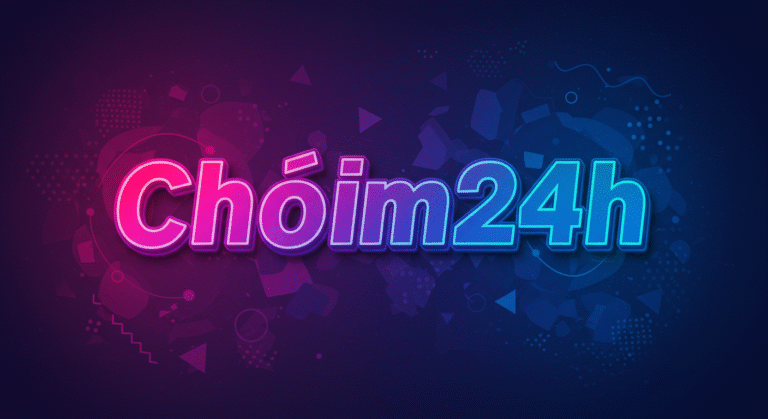
kz43x9nnjm65
Introduction: Why kz43x9nnjm65 Matters Today
In today’s digital landscape, cryptic strings like kz43x9nnjm65 appear more frequently—embedded in URLs, APIs, and backend databases. While seemingly random, kz43x9nnjm65 often plays a crucial role behind the scenes. This article unpacks what kz43x9nnjm65 represents, how it’s used in modern systems, and why staying informed about such identifiers can benefit developers, digital strategists, and everyday users alike.
What Is kz43x9nnjm65? Breaking Down the Code
At face value, kz43x9nnjm65 doesn’t reveal much—it’s a mix of lowercase letters and numbers. But that structure is familiar in the tech world:
-
Alphanumeric sequences: These are widely used for unique identifiers.
-
Uniqueness: The random combination reduces chances of collision.
-
Format suitability: Begins with letters, includes digits—ideal for tokens and ID strings.
Therefore, kz43x9nnjm65 likely functions as a system-generated ID, token, or reference tag. Far from nonsensical, it’s intentionally crafted for efficiency and reliability in digital platforms.
Common Applications for kz43x9nnjm65
Here’s a closer look at how kz43x9nnjm65 might be utilized across different spheres of technology:
1. User Session Tokens
Web apps often issue temporary strings like kz43x9nnjm65 when users log in. These session tokens prove active authentication, allowing users to stay logged in without re-entering credentials—while maintaining security.
2. Database Primary Keys
Many databases use alphanumeric keys to track records. It’s plausible that kz43x9nnjm65 serves as a unique key in a table—whether for products, users, logs, or transactions.
3. API Resource Identifiers
Web services frequently return resource IDs in JSON. For example:
Here, kz43x9nnjm65 allows the client to reference a specific object within API interactions.
4. Tracking Codes for Analytics
Developers use unique codes like kz43x9nnjm65 to trace user behaviors or A/B test variants. Assigning such identifiers enables precise measurement of what works best.
The SEO Angle: Should kz43x9nnjm65 Be Publicly Indexed?
It may seem odd, but strings such as kz43x9nnjm65 can surface on the web—and when they do, search engines can index them. This has two implications:
-
SEO clutter: Search engines crawling thousands of auto-generated pages with IDs like kz43x9nnjm65 can dilute your site’s relevance.
-
Use of canonical tags: Implementing canonical tags or robots.txt rules ensures Google focuses on your key pages—not spammy, ID-based ones.
In short, if your site URL ends in something like …/item/kz43x9nnjm65, make sure search engines treat it appropriately via meta directives.
Addressing Myths Surrounding kz43x9nnjm65
Because it looks enigmatic, kz43x9nnjm65 sometimes gets surrounded by rumors. Let’s clear up some common misconceptions:
-
Myth: “It’s a secret code or hack!”
Reality: Such strings are typically auto-generated—nothing mystical or malicious. -
Myth: “It hides backdoors in systems.”
Reality: Developers design these IDs for referencing, not for hidden control. -
Myth: “It’s part of a crypto wallet system.”
Reality: While crypto keys share similarities, kz43x9nnjm65 is too short and lacks the advanced entropy required for secure wallets.
By demystifying these string patterns, we foster clearer understanding of how modern systems work.
Practical Tips: Handling kz43x9nnjm65 Correctly
If you work with identifiers like kz43x9nnjm65, here are some smart practices to follow:
-
Don’t reveal them publicly: Tokens and session IDs shouldn’t be displayed in logs or URLs.
-
Rotate and expire: Ensure IDs like kz43x9nnjm65 expire after use to maintain security.
-
Standardize format: Stay consistent with length and character rules to ensure system compatibility.
-
Document their purpose: Clearly annotate each type of generated ID—whether for users, orders, or testing.
As these identifiers become foundational in microservices and distributed systems, clarity in their usage matters more than ever.
What’s Next for kz43x9nnjm65-like Strings?
The rise of decentralized platforms, blockchain, and edge computing means strings like kz43x9nnjm65 will evolve:
-
Longer, more complex keys: Blockchain IDs already use 64+ character strings.
-
QR integration: gzipped or compacted IDs may soon become scannable for AR overlays or offline references.
-
Self-sovereign IDs: As privacy gains priority, encrypted tokens may replace plain alphanumeric tokens—adding layers to what kz43x9nnjm65 stands for.
By understanding these trends, we stay ahead of the curve as identifiers transform.
Implications Beyond Tech
While kz43x9nnjm65 is clearly technical, its presence hints at broader themes:
-
Data privacy: Each ID could carry personal data or usage metrics—highlighting the need for responsible handling.
-
Personalization: AI and machine learning use tokens like kz43x9nnjm65 to tailor user experiences—smart dashboards, recommendations, or content feeds.
-
Consumer awareness: Even if invisible, knowing these identifiers matter helps everyday users ask critical questions about data use and transparency.
Thus, kz43x9nnjm65 isn’t just a string—it’s a testament to today’s information-driven society.
Conclusion: kz43x9nnjm65 in Summary
To recap, kz43x9nnjm65 reflects more than a random sequence—it signifies a modern identifier deployed across session management, data modeling, APIs, and analytics. While short and cryptic, its consistency ensures traceability, security, and scalability in digital ecosystems.
As we move into a future shaped by blockchain, privacy, and AI, strings like kz43x9nnjm65 will evolve in form and function. Staying informed helps professionals design systems responsibly—and empowers users to question how their digital footprints are tracked.
Next time you spot something that looks like kz43x9nnjm65, you’ll know it’s far more than “random characters”—it’s a small but essential piece of the digital puzzle.







